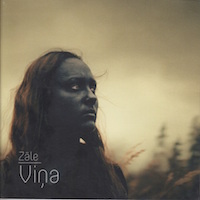2015.gada 19. un 20.septembrī Dublinā, Latvijas vēstniecības Īrijā telpās notika Eiropas Latviešu apvienības (ELA) ikgadējā biedru organizāciju sanāksme.
Piedalījās pārstāvji no Lielbritānijas, Īrijas, Vācijas, Luksemburgas, Beļģijas, Zviedrijas, Francijas un Austrijas. Sanāksmi atklāja Latvijas Republikas Ārlietu Ministrijas īpašo uzdevumu vēstnieks diasporas jautājumos Pēteris Kārlis Elferts un vēstnieks Īrijā Gints Apals.
Viens no sanāksmes galveniem tematiem bija ELA rīkotie Eiropas latviešu Kultūras svētki ELKS 2015, kas no 18.-21. jūnijam Briselē pulcēja vairāk kā 800 dalībniekus no 15 valstīm. Sanāksmes dalībnieki vienbalsīgi atbalstīja ELKS turpināšanu un aicina biedru organizācijas iesniegt pieteikumus nākamo svētku rīkošanai 2020.vai 2021.gadā.
Notika arī ELA amatpersonu pārvēlēšana un uz nākamajiem diviem gadiem par Eiropas Latviešu Apvienības priekšsēdi ievēlēja Kristapu Grasi no Latviešu Kopības Vācijā. Kristaps Grasis uzsvēra, ka par vienu no galvenajiem ELA uzdevumiem uzskata turpināšanu darboties pretī latviešu asimilācijai mītņu zemēs, jo tieši tai diasporas latviešu daļai, kas šobrīd ir bērnu un padsmitnieku vecumos, tuvāko gadu laikā savas identitātes jautājumi būs izškiroši. Svarīgi būs stiprināt ārpus Latvijas dzīvojošo latviešu saikni ar Latviju, kā labā jaunais ELA prezidijs vēlas cieši sadarboties ar Latvijas valdību, pašvaldībām un pilsonisko sabiedrību.
Jaunā prezidija sastāvs:
Kristaps Grasis ( Vācija) – priekšsēdis
Māris Pūlis (Lielbritānija) – vicepriekšsēdis, kasieris, izglītības referents
Ingūna Grietiņa ( Īrija) kultūras referente, ELA mākslinieciskās padomes vadītāja
Elīna Pinto ( Luksemburga) – politiskā referente
Ilze Zilgalve ( Beļģija )
Maira Ēriksone ( Zviedrija)
Ikgadējā Pasaules Brīvo Latviešu Apvienības sanāksmē Rīgā, ELA šogad kopā ar jauno priekšsēdi pārstāvēs Lilija Zobens un Māris Pūlis no Lielbritānijas un Indulis Bērziņš no Vācijas.
Sapulces dalībnieki izsaka paldies par veikto darbu līdzšinējiem prezidija locekļiem Aldim Austeram un Ilzei Šakarei. Nākamā ELA sanāksme plānota 2016.gada 19. un 20.martā, Igaunijas galvaspilsētā Tallinā.
********
ELA ir ārpus Latvijas reģistrētu Eiropas latviešu un latviešu sadraudzības nevalstisko organizāciju apvienība. ELA mērķis ir pārstāvēt latviešu diasporas intereses Eiropas mērogā, tās biedru organizāciju darbības saskaņošana informācijas, izglītības un kultūras jomā un sadarbības projektu veicināšana starp biedru organizācijām, kā arī ar radniecīgām citu tautību emigrantu organizācijām. ELA ir pārstāvētas latviešu kopienas 14 Eiropas valstīs – Īrijā, Lielbritānijā, Francijā, Nīderlandē, Beļģijā, Luksemburgā, Šveicē, Vācijā, Zviedrijā, Norvēģijā, Somijā, Igaunijā, Austrijā un Islandē.
Eiropas Latviešu apvienības 2015. gada 19./20. septembra kopsapulces rezolūcijas
- Eiropas Latviešu apvienība aicina latviešu organizācijas Eiropā aktīvāk uzraudzīt mītņu zemju mediju izplatīto informāciju jautājumos, kas skar Latviju un tās attiecības ar kaimiņvalstīm, un dziļāk iesaistīties informācijas darbā.
- Ņemot vērā to, ka citas valstis pēc Otrā pasaules kara uzņēma vairāk kā 100000 latviešu bēgļu un ka Eiropas Savienības valstis piedalās Latvijas aizsardzībā, Eiropas Latviešu apvienība mudina Latvijas valdību, politiķus un masu medijus veidot tolerantu nostāju pret patvēruma meklētājiem no kara plosītajām valstīm un aicina latviešu sabiedrību un nevalstiskās organizācijas Latvijā un pasaulē dot savu artavu atvērtas un solidāras Latvijas sabiedrības veidošanā.
- Eiropas Latviešu Apvienība izsaka sirsnīgu paldies bijušajam Eiropas Latviešu apvienības priekšsēdim Aldim Austeram un Eiropas Latviešu kultūras svētku (2015. gada 18.-21. jūnijā Briselē) rīkotājiem un dalībniekiem par lielo darbu un uzņēmību, lai atsāktu dziesmu svētku tradīciju latviešiem Eiropā.
Eiropas Latviešu apvienība aicina līdz 2016. gada februārim pieteikties tās latviešu organizācijas Eiropā, kas vēlas uzņemties rīkot nākamos Eiropas Latviešu kultūras svētkus 2020. vai 2021. gadā.
- Eiropas Latviešu apvienība asi nosoda centienus kavēt Latvijas Okupācijas muzeja rekonstrukcijas darbu uzsākšanu, tādā veidā neļaujot muzejam pilnvērtīgi pildīt savu darbu Latvijas vēstures skaidrošanā Latvijas un starptautiskajai sabiedrībai.
Šobrīd, kad atsevišķas valstis un sabiedrības grupas cenšas pārrakstīt Otrā pasaules kara un pēckara vēsturi, ir jo īpaši svarīgi atgādināt par Padomju Savienības komunistiskā un Vācijas nacionālsociālistiskā režīma noziegumiem pret Latvijas valsti, tautu un zemi, tautas pretošanos, valsts atjaunošanu un ilgstošās okupācijas sekām.
Iespēja parakstīties Okupācijas muzeja Nākotnes nama atbalstam.
- Ņemot vērā, ka Lielbritānijā un Īrijā kopā no latviešu ģimenēm ik nedēļu izņem vidēji 1-2 bērnus, Eiropas Latviešu apvienība lūdz Latvijas valdību iestāties par šo bērnu tiesībām uz ģimenes valodu un kultūru atbilstoši Apvienoto Nāciju Organizācijas Konvencijai par bērnu tiesībām.
Kamēr šie bērni ir Lielbritānijas vai Īrijas sociālo dienestu gādībā, viņiem pašlaik netiek piedāvātas latviešu audžuģimenes vai iespēja lietot savu valodu, – bieži vairāku gadu garumā.
Eiropas Latviešu Apvienība pieprasa Latvijas valdībai gādāt par juridisko palīdzību, psihologu atbalstu un sociālās aprūpes palīdzību šajos gadījumos, kā arī palīdzēt izveidot latviešu audžuģimeņu tīklu šajās zemēs.
- Eiropas Latviešu apvienība aicina biedru organizācijas aktīvi apzināt un mudināt latviešu diasporas jauniešus izmantot studiju iespējas Latvijas augstskolās un arodskolās.
Eiropas Latviešu apvienība mudina Latvijas augstskolas īpašu uzmanību pievērst latviešu diasporas jauniešu uzņemšanai studiju programmās Latvijā, tajā skaitā popularizējot savas studiju programmas latviešu kopienās ārvalstīs.
Eiropas Latviešu apvienība aicina Latvijas iestādes izvērst iniciatīvas latviešu diasporas jauniešu iekļaušanai Latvijas valsts pārvaldes darbā, tajā skaitā atbalsta Valsts Kancelejas stipendiātu programmas turpināšanu.
- Lai sekmētu Eiropas Latviešu apvienības centienus veicināt solidaritāti un saskaņotu darbības vīziju starp latviešu organizācijām Eiropā, Eiropas Latviešu apvienība aicina Sabiedrības integrācijas fondu pielāgot turpmāko valsts atbalsta konkursu noteikumus, jo īpaši:
– piešķirt augstāku vērtējumu vairāku organizāciju sadarbības projektiem un Valsts svētku atbalsta projektiem;
– paredzēt, ka diasporas aktivitātes drīkst īstenot arī Latvijā un visa gada garumā;
– izvirzīt prasību, ka finansējumam var pieteikties tikai organizācijas ar vismaz viena gada darbības pieredzi.
- Eiropas Latviešu apvienība aicina Latvijas valdību turpināt latviskās izglītības līdzfinansēšanu arī pēc 2017. gada un iekļaut šos līdzekļus valsts pamatbudžetā.
Eiropas Latviešu apvienība lūdz Kultūras ministriju sagatavot un dalībniekiem izplatīt konferences „Latvieši pasaulē – piederīgi Latvijai” rezultātu kopsavilkumu.
Eiropas latviešu apvienība




